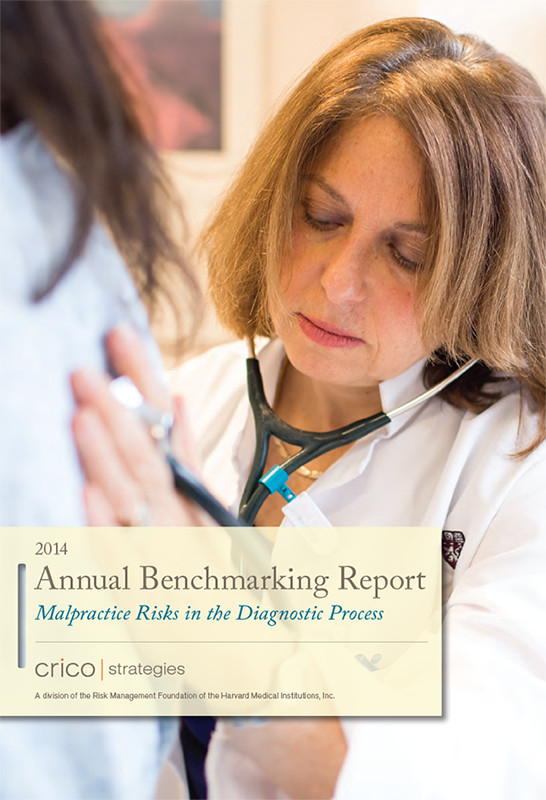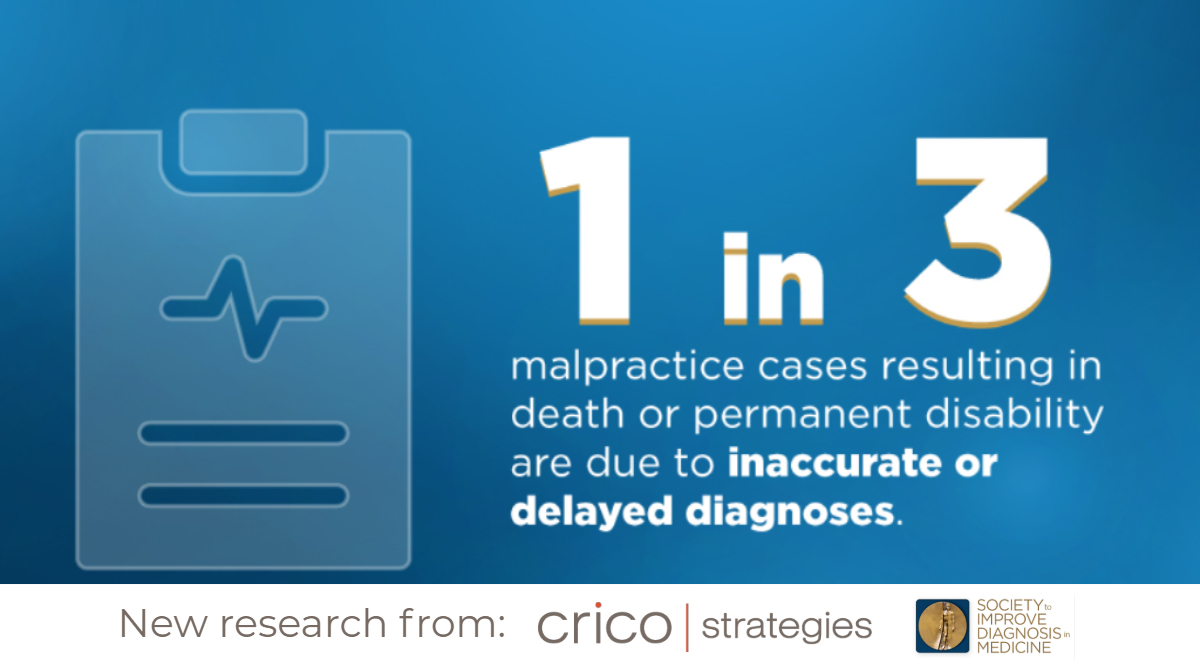Article
Bringing Malpractice Data to Bear on the Challenge of Diagnostic Errors

“Johns Hopkins University Medical School & SIDM leverage Candello data to identify the proportion of cases with diagnosis-related allegations and the “big three” disease categories.”
Improving Diagnosis in Health Care
The influential 2015 report from the National Academy of Medicine, Improving Diagnosis in Health Care, described the scope of the problem of diagnostic errors in medicine.1 The report estimated that 1 in 20 U.S. adults who obtain outpatient care in a given year experience a diagnostic error and that “most people will experience at least one diagnostic error in their lifetime, sometimes with devastating consequences.” Despite the prevalence of diagnostic errors, the report also noted that the issue has received only limited attention from patient safety officials.
At least part of the reason why addressing the problem of diagnostic errors has been a challenge for patient safety officials is that the types of systems-level approaches that have been employed effectively in the past do not neatly apply to the problem of diagnostic errors.2 As an example, one of the archetypes of a successful patient safety program is the use of a bundle of interventions, including a checklist to ensure infection control procedures were followed, to increase the safety of central venous catheter insertion in the ICU. Once this intervention had been in place for 16–18 months, the incidence of catheter-related bloodstream infections decreased by 66%.3 The placement of a central venous catheter involves a predictable, limited number discrete steps, lending itself to the use of check lists and other patient safety protocols. The diagnostic challenge of a patient who presents to their primary care physician with a complaint of long-standing fatigue represents a very different situation, in which the appropriate next steps are difficult (though not necessarily impossible) to capture in a checklist or written algorithm.
Leveraging Electronic Health Records
One promising tool to bring to bear to reduce diagnostic errors is electronic health records (EHRs).4,5 However, some of the ways that EHRs could potentially reduce diagnostic errors—such as by using published risk scores to automatically calculate the probability of a patient having a specific diagnosis, such as a pulmonary embolism—are disease-specific. Thus, an important step in tackling the problem of diagnostic errors is to describe those conditions that clinicians are missing. An article recently published in the journal Diagnosis, using data from CRICO Strategies’ Comparative Benchmarking System, seeks to do just that.6
Identifying the “Big Three”
The study, a result of a collaboration between CRICO and Johns Hopkins, aimed to answer what proportion of high-injury severity malpractice cases involving diagnosis-related allegations came from the “big three” categories of diseases: vascular events, infections, and cancers. These “big three” categories accounted for 74.1% of such claims, with the highest percentage due to:
- cancers (37.8%),
- followed by vascular events (22.8%),
- and infections (13.5%).
The most common diseases within these disease categories were lung cancer, stroke, and sepsis, respectively. Knowing the conditions that are most frequently misdiagnosed can help patient safety officials direct resources aimed at reducing diagnostic errors at those diseases where they will have the greatest impact. For example, sepsis was the most frequently missed diagnosis within infections, and the implementation of automatic sepsis alerts within the EHR is becoming more common.7
This article in Diagnosis is part of a lineage of studies that have harnessed the insights that exist within malpractice data to promote improvements in the diagnostic process.8,9 The ability of malpractice data to help improve the safety of patient care was succinctly captured by Michael Paskavitz, Assistant Vice President of CRICO Strategies, “There is safety in numbers.”10
References
- Balogh E, Miller BY, Ball J, eds. Improving Diagnosis in Health Care. Washington, DC: The National Academies Press; 2015.
- Singh H, Graber ML. Improving diagnosis in health care—The next imperative for patient safety. New England Journal of Medicine. 2015;373(26):2493-2495.
- Pronovost P, Needham D, Berenholtz S, et al. An intervention to decrease catheter-related bloodstream infections in the ICU. New England Journal of Medicine. 2006;355(26):2725-2732.
- Schiff GD, Bates DW. Can electronic clinical documentation help prevent diagnostic errors? New England Journal of Medicine. 2010;362(12):1066-1069.
- Khullar D, Jha AK, Jena AB. Reducing diagnostic errors—Why now? New England Journal of Medicine. 2015;373(26):2491-2493.
- Newman-Toker DE, Schaffer AC, Yu-Moe CW, et al. Serious misdiagnosis-related harms in malpractice claims: The “Big Three” – vascular events, infections, and cancers. Diagnosis. Published online July 11, 2019.
- Makam AN, Nguyen OK, Auerbach AD. Diagnostic accuracy and effectiveness of automated electronic sepsis alert systems: A systematic review. Journal of Hospital Medicine. 2015;10(6):396-402.
- CRICO Strategies. 2014 Candello Benchmarking Report, Malpractice Risks in the Diagnostic Process. Boston, MA, 2014.
- Schiff GD, Puopolo AL, Huben-Kearney A, et al. Primary care closed claims experience of Massachusetts malpractice insurers. JAMA Internal Medicine.2013;173(22):2063-2068.
- CRICO Strategies. 2018 Candello Benchmarking Report, Medical Malpractice in America. Boston, MA, 2018.
Related Articles
Neurosurgery and Medical Malpractice Risk

Legal Report: Curbside Consults in the Digital Age

CRICO’s 12-Step Diagnostic Process of Care Framework


